#comontable
Explore tagged Tumblr posts
Text
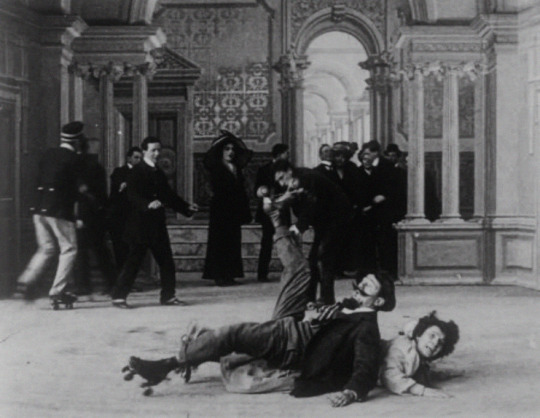
“Film Comedy’s Eves” Watchalong
You know how, when you read a book on film, you inevitably inflate your to-watch list to untenable levels (or pause your reading to check some titles out)? Or is that just me?
On that note, I’ve been reading Steve Massa’s Slapstick Divas: The Women of Silent Comedy. So far, it’s an expansive, indispensable survey of the work of women in the early days of film comedy with a few cheeky extras thrown in. As a devotee of The Silent Comedy Watch Party, I was already familiar with some of the women Steve profiles in the book, but obviously I wanted to see as much of their work as possible.
So, I put together a playlist featuring most of the women from the first chapter of the book, “Film Comedy’s Eves.” The list below was curated based on the prominence of the women in the film as well as general quality (although how good a comedy is is highly subjective!), but the youtube playlist has a few more titles included.
Two quick presentation notes:
Some of the videos have music and some don’t, so you may want to check your volume level.
The intertitles for some of these films are not in English, so be sure you have captions turned on for English translations.
I didn’t do write-ups for the films or the divas because if these films interest you, you should check out Steve’s book! I would also be remiss if I didn’t note that many of the women from this chapter of Slapstick Divas are featured on the Cinema’s First Nasty Women set. (See if your local library has a copy!)
---
Little Moritz enlève Rosalie / Little Moritz Runs Away with Rosalie (1911)
[letterboxd | imdb]
The Diva: Sarah Duhamel (Rosalie)
youtube
---
Boireau et la gigolette (1912)
[letterboxd | imdb]
The Diva: Valentina Frascaroli
youtube
---
Léontine garde la maison / Léontine Keeps House (1912)
[letterboxd | imdb]
The Diva: Léontine (performer as yet unidentified)
youtube
Watch more BELOW the JUMP!
---
Cunégonde femme cochère / Cunégonde the Coachwoman (1913)
[letterboxd | imdb]
The Diva: Little Chrysia
youtube
---
L’acqua miracolosa / The Miracle Water (1914)
[letterboxd | imdb]
The Diva: Gigetta Morano
youtube
---
Lea si diverte / Lea’s Joke (1912)
[letterboxd | imdb]
The Diva: Lea Giunchi
youtube
---
The Handy Man (1923)
[letterboxd | imdb]
The Diva: Mathilde Comont
youtube
---
Twelfth Night (1910)
[letterboxd | imdb]
The Diva: Florence Turner
youtube
---
All on Account of the Milk (1910)
[letterboxd | imdb]
The Diva: Mary Pickford
youtube
---
Her Crowning Glory (1911)
[letterboxd | imdb]
The Diva: Flora Finch
youtube
☕Appreciate my work? Buy me a coffee! ☕
#silent film#silent cinema#classic film#classic movies#film#american film#silent movies#1920s#1890s#1910s#silent comedy#Steve Massa#Lea Giunchi#mary pickford#Valentina Frascaroli#Leontine#Little Chrysia#Mathilde Comont#Florence Turner#Flora Finch#Gigetta Morano#Sarah Duhamel#film recommendation#film history#cretinetti#stan laurel#marcel perez#french cinema#cinema italiano#british film
21 notes
·
View notes
Text
NGL I can see why Poppy easily fell for this prettyboy mobster dumbass and left the other mobster guy

Look at his dumb, pretty face.

#scarface 1932#scarface#classic hollywood#paul muni#tony comonte#tony camonte#gangster films#mafia#mobsters#1930's#black and white#pretty boy
13 notes
·
View notes
Text
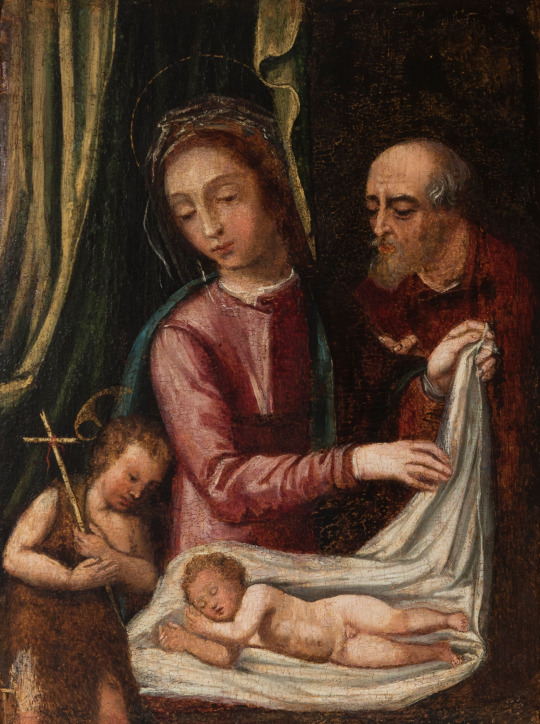
Francisco Comontes (Attributed to) - Sagrada Familia con San Juanito
4 notes
·
View notes
Text




The Lady Who Dared (1930) William Beaudine
August 31st 2024
#the lady who dared#1930#william beaudine#billie dove#conway tearle#sidney blackmer#judith vosselli#cosmo kyrle bellew#lloyd ingraham#mathilde comont#ivan f. simpson#The Devil's Playground#pre-code
1 note
·
View note
Text

Mathilde Comont as Mama Gini in an original lobby card for Ceiling Zero (1936) with James Cagney and June Travis. Matty was born in Bordeaux, France, and had 77 acting credits from two 1908 shorts to 1937. Most of her movies are long forgotten.
1 note
·
View note
Text

In a desperate attempt to revive their floundering brand amid declining revenues, WeightWatchers officials announced Thursday that butter was now worth zero points. “Joining the likes of cauliflower, plain Greek yogurt, and air-popped popcorn, butter will now be a WeightWatchers ZeroPoint food, so go ahead and eat—or drink—as much as you like,” said interim CEO Tara Comonte, adding that to make planning easier, the company would be releasing its own brand of frozen butter that customers could purchase in their supermarket’s single-serve meals section.
Full Story
211 notes
·
View notes
Text
CNN 5/7/2025
WeightWatchers files for bankruptcy
By Jordan Valinsky, CNN
Updated: 7:16 PM EDT, Tue May 6, 2025
Source: CNN
WeightWatchers, the 62-year-old program that revolutionized dieting for millions of people around the world, has filed for bankruptcy.
The company announced Tuesday it has entered Chapter 11, which “will bolster its financial position, increase investment flexibility in its strategic growth initiatives, and better serve its millions of members around the world.”
The company, now known as WW International, has struggled with about $1.5 billion in debt and has failed to keep pace with more convenient weight loss options, including GLP-1 drugs like Ozempic, over counting points and calories.
During the bankruptcy process, its massive amount of debt will be eliminated, and it expects to emerge in about 40 days as a publicly traded company. Operations for its members will continue as normal, it said.
“The decisive actions we’re taking today, with the overwhelming support of our lenders and noteholders, will give us the flexibility to accelerate innovation, reinvest in our members, and lead with authority in a rapidly evolving weight management landscape,” said CEO Tara Comonte in a release.
WW International has a had rough few years after a turnaround plan from its former CEO, Sima Sistani, failed. She was forced out of her position in September 2024 after a two-and-a-half-year stint.
Sistani bought a telehealth platform that connected patients with doctors who can prescribe weight-loss and diabetes drugs, representing a radical change for a service that made its name for in-person meetings and portion control. But the pivot didn’t work, and the stock has plummeted.
Sistani was replaced by Comonte, a former chief financial officer at fast food chain Shake Shack. Its most recent earnings release in February revealed a 12% decline in members and that its $100 million in interest payments on debt is a “a significant ongoing burden for the company.”
WW took another hit last year when star investor Oprah Winfrey announced she was leaving the company’s board after nearly a decade holding that position and donated all of her stock to a museum.
The former talk show host credited the program for help losing 40 pounds in 2016 but later revealed that she had also used an unnamed weight loss drug to lose more.
WW’s history
The company was founded in 1963 by Jean Nidetch, a self-described “overweight housewife obsessed with cookies” whowas fed up with fad diets and pills.
She began hosting weekly meetings at her home with friends to discuss their difficulties with dieting and exercise. “Compulsive eating is an emotional problem,” Nidetch told Time magazine in 1972, “and we use an emotional approach to its solution.”
Abiding by her philosophy — “It’s choice, not chance, that determines your destiny” —Nidetch lost more than 70 pounds and kept it off.
Part of its success can be attributed to its points system, where one number represents each food and drink’s calories, saturated fat, sugar and protein. The company had 3.3 million subscribers at the end of 2024.
WW’s shares have devolved into a penny stock, a far cry from when it was trading at its peak at around $100 in 2018.
See Full Web Article
Go to the full CNN experience
© 2025 Cable News Network. A Warner Bros. Discovery Company. All Rights Reserved.
Terms of Use | Privacy Policy | Ad Choices | Do Not Sell or Share My Personal Information
"It's a Sign-o'-the-Times...."
youtube
3 notes
·
View notes
Text

Douglas Fairbanks in The Thief of Bagdad (Raoul Walsh, 1924)
Cast: Douglas Fairbanks, Julianne Johnston, Anna May Wong, Snitz Edwards, Sojin Kamayama, Brandon Hurst, Tote Du Crow, Noble Johnson. Screenplay: Lotta Woods, Douglas Fairbanks, Achmed Abdullah, James T. O'Donohoe. Cinematography: Arthur Edeson. Production design: William Cameron Menzies. Film editing: William Nolan.
Back when Bagdad was synonymous with flying carpets and not prolonged international conflict, Douglas Fairbanks produced what is either a magical romp or an example of Orientalism at its worst, depending on your point of view. But for the purposes of film history, let's suspend political and social consciousness and appreciate The Thief of Bagdad for what it accomplished: an amusing spectacle, with marvelous sets and (for the time) remarkable special effects. Add to that Fairbanks's energetic performance -- if you can endure the balletic pantomime he often slips into -- and you've got a classic for the usual kids of all ages. It holds up well even today, in part because it's all spectacle: Sound would be superfluous. And yes, Sojin Kamayama's Mongol prince adheres to the "yellow peril" stereotype, a foreshadowing of Flash Gordon's Ming the Merciless, with Anna May Wong slinking around as his partner in malfeasance, but we're treating this as camp, right? Julianne Johnston's princess is a little vapid, not quite the astonishing beauty who's supposed to sweep the thief off his feet and turn him away from larceny toward love. The movie is a shade too long, and it loses some momentum when the thief goes off on his quest to find the thing that will win the princess's love. Even though it helps him save Bagdad from the Mongol hordes, I found his box of magic powder (if that's what it is -- the movie is a little vague about it) less impressive than the Persian prince's (Mathilde Comont) flying carpet, the Indian Prince's (Noble Johnson) crystal ball, and the Mongol prince's golden apple that gives him power over life and death. But even when the story lags, there's always something fun to watch.
6 notes
·
View notes
Text

3. Francesco Santini (Apocalypse and Survival Italy, 1994)
[from: https://libcom.org/library/apocalypse-survival-reflections-giorgio-cesaranos-book-critica-dell%E2%80%99utopia-capitale-expe — See also the pdf edition published by Malcontent Editions]
10.2 Two opposed points of view on organization.
In 1971 Comontism took shape and the group that had formed based on the positions of Invariance [the journal directed by Camatte] dissolved. It must be mentioned that both tendencies had diametrically opposed attitudes towards the “question of organization.” One of these attitudes was in fact that of Cesarano and a large part of the current. The idea of Comontism instead whimsically identified its own members (largely veterans of the similar Organizzazione Consigliare di Torino) with the historical party of the proletariat, or, even better, with the “human community.”
On this basis, it created an organization with branches in several Italian cities (see Maelström, No. 2), which erased any distinction between theoretical and practical activity, between public life and private life, between individual and organization. Comontism thus attempted to breathe life into a concrete communism, characterized by:
The collectivization of all resources for survival;
A “total” way of living together;
The constant practice of the “critique of everyday life” in order not to yield to the pressure imposed by society in the form of family, social milieu, legal relations, etc.
The immediatist illusion of the group caused it to overlook one fundamental fact: that between capitalism—that is, between personal relations dominated by valorization—and communism, there is a revolution that, according to Marx, serves among other things to “get rid of all the old shit.” For Comontism the Gemeinwesen [human community] had to be put into practice here and now: it was all about the passage to communism of twenty or thirty persons, communizing all relations all at once: this idea would lead inevitably and immediately to the production of an ideology: immediatism was rapidly followed by the elaboration of a whole set of “theoretical” corollaries.
In retrospect, we have to sympathize with Comontism: it was a group of courageous individuals who always stayed at their posts at the revolutionary front, bravely confronting harsh repression and fighting against various Maoist-workerist splinter groups that had specialized military structures crafted to ensure that the assemblies and demonstrations were conducted in a way that was acceptable to their father-master PCI (with the sole exception —besides, naturally, the Bordiguist groups that had already experienced the armed repression of the “extraparliamentary” Stalinists—of Potere Operaio, a group devoted to guerrilla tactics which, although it did not publicly defend the revolutionaries, was always opposed to […]the systematic calumnies of the left which had for several years been proclaiming that “situationists=fascists.” It is indisputable, however, that Comontism was a revolutionary group, which the Cronaca di un ballo mascherato justly cited as part of the radical communist current. Not in vain did it claim to have remained on the terrain of revolutionary practice, when so many other former Luddites had accepted the separation between the “militant” public life and private life, which soon led them to passive nihilism and, in many cases, to renounce the revolutionary option in favor of worldly success or simply a tranquil life. On the other hand, one cannot avoid criticizing the retreat of Comontism with respect to the level attained by Ludd. Comontist immediatism is nothing but a substitutionism of the proletariat carried to its logical extreme.
From this point of view, Comontism was an authentic model of ideology, based on an undeclared but easily recognizable hierarchy, which subjected its recruits to initiation tests and examinations of their radicality. The most disastrous aspect of Ludd, which we shall discuss in connection with Cesarano’s critique, became a systematically and relentlessly applied ideology. Among its ideological conclusions we find: the apology for crime (the only respected and recognized way to survive); the praise, not publicly proclaimed, but a constant feature within the group, for hard drugs as an instrument of destructuring and liberation from family and repressive relations; the sectarian attitude of superiority displayed towards every element external to the organization; the group’s hostility to the hard working, sheep-like proletariat, which was viewed as just as culpable as everyone else who was not part of the organization. All of this turned Comontism into a gang at war with all of humanity, and an uncritical follower of the criminal model. This is what we mean by “ideology”: the theorization of this practical attitude in fact prevented any critical procedure from assuming a material basis: they were dogmas embedded in the extremely coercive experience of the members of the group. This form of immediatism was certainly one of the reasons that prevented Cesarano from drawing practical conclusions, and which led him to lose himself in sterile abstractions.
However, behind this and other dead ends of Cesarano we find certain positions that are diametrically opposed to those of Comontism: the positions of Invariance.
Invariance had “resolved” the problem of organization by studying the measures employed by Marx to prevent the party from succumbing to bourgeois reformism during the period of counterrevolutionary retreat. This analysis was extremely partial, since it completely ignored all of Marx’s activity that was devoted to building the communist party, and distorted the revolutionary tradition by avoiding a critical examination of the purely political activity of Marx taken as a whole. This attitude was expressed in a text from 1969, published three years later by Invariance under the title, “On Organization,” signed by Camatte-Collu, which can be summarized as follows:
Under the real domination of capital every organization tends to be transformed into a Mafia or a sect;
Invariance avoided this danger by dissolving the embryonic group that had begun to form around the journal;
All organized groups are excluded a priori, because of the risk that they will be transformed into Mafias;
Relations between revolutionaries are only useful at the highest level of theory, which each individual can attain in a personal and independent way, or otherwise fall prey to followerism.
According to Camatte and Collu, the danger of individualism was of no account because the “production of revolutionaries” was already underway—in 1972: the extension of the revolutionary process was such that a network of interpersonal contacts at the “highest” level of theory was already guaranteed and was even evident.
Thus, Camatte and Collu expressed in the clearest way an error that was typical of the entire current and of Cesarano himself. In reality, a pre-revolutionary stage on an international level was not opening up in 1972 (despite the fact that the movement would continue to resist, although only in Italy), nor was an inexorable production of revolutionaries imminent (even Camatte and Collu would desert). Therefore, the disregard of individualism was nothing but an illusion. There was nothing glorious about dissolving the small group that was forming around the journal. This did nothing but accelerate what was already taking place: the dispersion of the sparse revolutionary forces that remained from 1968, forces which would not experience a resurgence (in France there were no more large-scale social uprisings, and in Italy the revolutionary current faced 1977 so weakened by individualism that it was incapable of undertaking any relevant interventions). In fact, individualism favored the dissolution of the revolutionary perspective: either because life in isolation produced a feeling of reduced self-esteem—which could only be escaped by comparing oneself with one’s peers—which prevented one from perceiving the movement and which generated discouragement and depression, the loss of one’s defenses against the invasion from “outside” and surrender to dominant tendencies; or because it disguised personalism and elitism, and served to enable one to get rid of those uncomfortable relations that could stand in the way of an opportunist reinsertion into bourgeois ideology. During the seventies and eighties the work of the liquidation of the organizational remnants (which were by then fragile and informal) and the unjustified fear of succumbing to politics, “workerism” or leftism, contributed the impulse to jump to the “other side of the barricade” for those exponents of the “elite” who had transformed theory into a fetish and who were mistrustful of the alleged danger of followerism (a danger that was actually imaginary and non-existent: in Italy no group or personality exercised any attraction or obtained passive followers such as the Situationist International had on the other side of the Alps. In France, in any event, Invariance never did so). We have been analyzing two views regarding organization that were typical of the seventies, which we can reject without any remorse, and above all without falling prey to any of the mystifications offered by the youngest elements. The first view, that of Comontism, is the model of the criminal gang-historical party-human community. Although respectable from a human point of view (like its current epigone, the French group, Os Cangaceiros), and although it was often interesting for the practical-organizational-lifestyle solutions that it proposed (the revolutionaries must live “as if” communism was already a fact and could thus face the terrible struggle for survival together, which was twice as hard for them), its vision was born from resentment: the proletariat is not revolutionary, so “we” (the tiny groups) are the proletariat; we are the now-realized human community. This led them to a dogmatic and ideological evaluation of their own sectarian activity and offered the most disastrous answers: the terroristic self-criticism imposed on every gesture and every word; the fetishism of coherence; the lurking possibility of political decline, caused above all by the spell cast by action, which led them to become a mere gang of loud-mouthed thugs. All of this was based on the totemic-fetishistic blackmail of “practice,” in the ideological scorn for theory and lucid action.
The other, “invariantist,” view, which would later spread over a large part of the radical current, is the model of the circle of relations among “theoreticians.” In this case, the enormous totem-fetish of theory conceals the unilateral nature of relations limited to a tiny elite of “critics.”
Such an attitude, now that the illusions regarding a rapid and abundant “production of revolutionaries” have dissipated, amounts in reality to pure and simple individualism. Instead, there is nothing left to do but to adjust to the fact that the revolutionaries are now isolated. To increase their current powerlessness by taking a position against organization does not make any sense. The alternative of continuing to pursue this option, in an environment of the anxious atomization of revolutionaries, insisting on the anti-Mafia phobia and on the exclusivity of relations between a handful of the elect (if one can find any such elect) at the highest level (higher than what?) of theory, is not very attractive.
Although it is now clear that the resurgence of activism and militancy rapidly leads back to politics, it is also clear that the fetish of theory separated from collective efficacy and, if possible, organized practice, offers no way out. Communist principles, united with a critical theory animated by its contrast with the theory of the previous two decades and with the principle results of the recent past—that is: a revolution of and for life, a questioning of the limits of the ego and of personal identity (which in the work of Cesarano are denounced vehemently and comprehensively), the experience of a revolution in the revolution—are the only antidotes against the Mafioso degeneration, which cannot be escaped by way of self-valorizing isolation, and much less by the original and personal road of an alleged creativity.
It is obvious that in 1970 there was no danger posed by the possibility that a militant-activist group associated with Invariance or a core group of “theoreticians” would be formed. In fact, the danger was just the reverse: disintegration and the neglect of the most important questions that should have been addressed:
The reformulation of the contribution of the historical ultraleft (Bordiga and the most consistent sector of the German revolution, which were decisive for the world revolution);
Draw up a balance sheet of the new contents contributed by the sixties;
The need to create a network of relations capable of enduring and prepared to reinitiate the revolutionary possibilities that were presented during the seventies.
According to Camatte and Collu the “production of revolutionaries” would magically resolve all problems, when what actually took place immediately thereafter was the dispersion of the revolutionaries, and it became evident that they were incapable of taking advantage of the opportunity that would be once again, and only in Italy, be presented.
In the following years the question of nihilism arose, still posed in terms that were upside down with respect to reality: in reality the expressions of nihilism were the abandonment of the revolutionary tradition, the end of the search for communist relations among subversives, the denial of the need to become an effective community, and the underestimation of the need to avoid being dragged down by the counterrevolution.
Comontism was a caricature of relations between revolutionaries, with its illusion that all problems could be magically resolved by the right ideology, and its pretension of being the embodiment of the theory of the sixties, now complete, which only had to be applied in practice without any delay. Although it was aberrant and unsustainable on the theoretical plane, this simplification was based on a profoundly correct demand: theory cannot be a separate and specialized activity, it is an integral part of the everyday coherence of revolutionaries and the need to change reality in its entirety, to have an impact on society and on history.
Comontism had a doubly counterproductive result:
Because it created a gang that proclaimed itself to be the enemy of society and the proletariat, preventing any possibility of forming a pole of regroupment and of having an effect on society;
Because it was easily recuperable by the most typical ideology of the seventies: that which consisted in justifying—as Toni Negri did—the groups produced by social disintegration, instead of subjecting them to a radical critique. This made Comontism incapable of providing any perspective to a sector, one that was much more coherent in 1977, of young people who broke with the hierarchical and instrumental armed practice of Autonomia Organizatta and who instead wanted to act for themselves, courageously but with impoverished and confused ideas.
Comontism, however, was right to reject the elitism of the few who act “at the highest level of theory.” Such elitism could only lead to the creation of relations rooted solely on the intellectual plane.
Cesarano was the only person who acted on the highest level, producing a clear and explicit theory, completely anti-esoteric, vainly trying to provide a human solution to this pseudo-intellectual milieu, characterized by its absolute fragility and by its tremendous incoherence (except for Piero Coppo and Joe Fallisi, the only other people among his comrades who preserved a revolutionary coherence, without nourishing any pretenses to superiority derived from the possession of theory).
[…]
#freedom#ecology#climate crisis#anarchism#resistance#community building#practical anarchy#practical anarchism#anarchist society#practical#revolution#daily posts#communism#anti capitalist#anti capitalism#late stage capitalism#organization#grassroots#grass roots#anarchists#libraries#leftism#social issues#economy#economics#climate change#climate#anarchy works#environmentalism#environment
4 notes
·
View notes
Text
Company looking to restructure $1bn debt
WeightWatchers, the iconic diet brand now operating as WW International, has filed for Chapter 11 bankruptcy protection as it struggles to adapt to a new era dominated by blockbuster weight-loss drugs like Ozempic and Wegovy. The New York-based company announced Tuesday that it would restructure $1.15 billion in debt to better position itself for long-term survival. CEO Tara Comonte assured…
0 notes
Text

Freaks - 1932
Directed by Tod Browning
Wallace Ford … Phroso Leila Hyams … Venus Olga Baclanova … Cleopatra Roscoe Ates … Roscoe (as Rosco Ates) Henry Victor … Hercules Harry Earles … Hans Daisy Earles … Frieda Rose Dione … Madame Tetrallini Daisy Hilton … Siamese Twin Violet Hilton … Siamese Twin Schlitze … Pin Head Josephine Joseph … Half Woman-Half Man Johnny Eck … Half Boy Frances O'Connor … Armless Girl Peter Robinson … Human Skeleton Olga Roderick … Bearded Lady Koo Koo … By Herself Prince Randian … The Living Torso Martha Morris … Armless Girl Elvira Snow … Pinhead (as Zip) Jenny Lee Snow … Pinhead (as Pip) Elizabeth Green … Bird Girl Angelo Rossitto … Angeleno Edward Brophy … Rollo Brother Matt McHugh … Rollo Brother (as Mat McHugh) John Aasen … Giant (uncredited) Ernie Adams … Sideshow Patron (uncredited) Demetrius Alexis … Mr. Rogers (uncredited) Hooper Atchley … Doctor (uncredited) Jerry Austin … Knife-Throwing Dwarf (uncredited) Sidney Bracey … Hans' Butler (uncredited) Mathilde Comont … Madame Bartet (uncredited) Albert Conti … M. Duval the Landowner (uncredited) Tiny Doll … (uncredited) Edith … Crawling Girl (uncredited) Murray Kinnell … Freakshow Barker (uncredited) Constantine Romanoff … Man Bringing Frieda's Horse (uncredited) Michael Visaroff … Jean the Gamekeeper (uncredited)
2 notes
·
View notes
Text

Antonio de Comontes Saint Michael Slaying the Dragon, ca 1540.
0 notes
Video
vimeo
TED talks - Zebra Technologies from Datadot on Vimeo.
We were invited by Skillen & Co., a Canadian video producer company, to collaborate with them in designing and animating visual schemes for TED and Zebra Technologies’ video. As most of the content is about non-physical concepts, our goal was to develop visual explanations to work with the interview’s narrative highlighting the essence of the information that was being spoken. We have done more than 20 animations that are placed over the film. As a result, the video have accomplished to easily inform how technology is shaping our daily lives and what we might expect over the next following years.
Watch the motion only demo here: vimeo.com/390579868
Motion Design - Datadot Estúdio Art direction & Design: Flavia Marinho, Otávio Burin Illustration: Guilherme Henrique Animation: Flavia Marinho, Otávio Burin
- Film Credits -
Producer and Director Nathan Skillen
Cinematographer Lindsay George
Camera Assistant Brianne Nord-Stewart
Location Sound Alex Shamku
Make-up / Hair Jena Jacquot
TED Producers Alexis Reiner Kristin Wheeler
Editors Nathan Skillen Josue Sanchez
Post-Production Sound Mixing & Production ICTUS Audio
Colour Silver Lining Post: David Tomiak, Ryan Mence
Cast Jeff Schmitz, Chief Marketing Officer, Zebra Technologies Jonathan Brill, Global Futurist, HP Tara Comonte, Chief Financial Officer, Shake Shack Juggy Sihota, Vice President, Consumer Health, Telus
0 notes
Photo

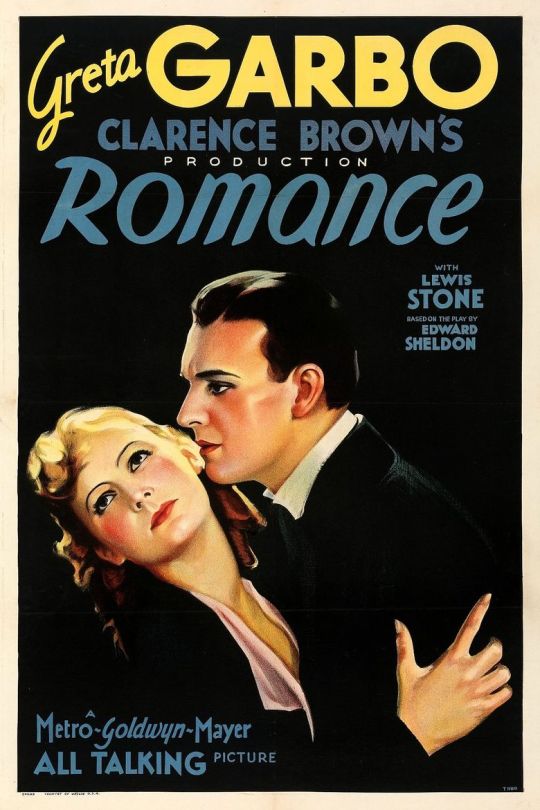



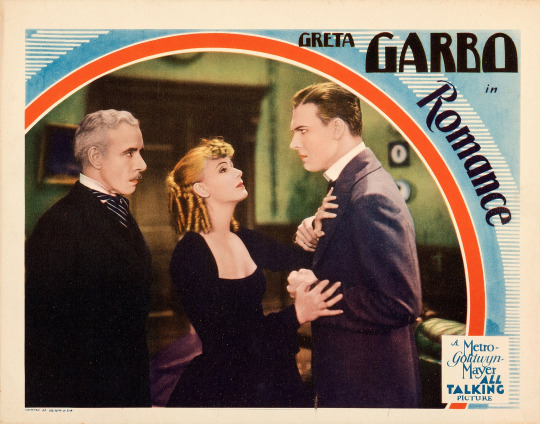




Romance (1930) Clarence Brown
February 6th 2022
#romance#1930#clarence brown#garbo#lewis stone#gavin gordon#clara blandick#elliott nugent#mathilde comont#pre-code
2 notes
·
View notes
Note
Fuse Bertrum and Grant!
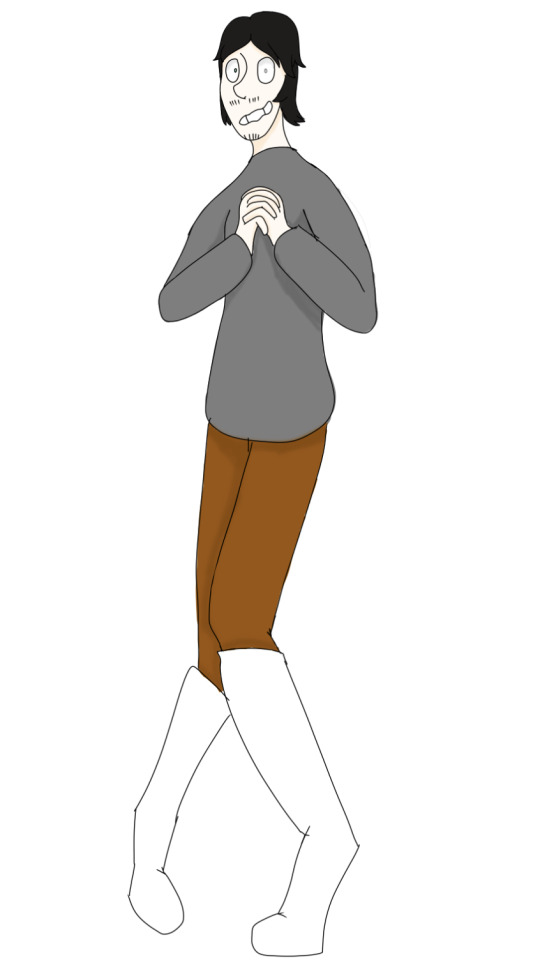
His name is Brandon (or just Brant that works to Lmao) and he is a perfectionist and way to obsessed with self-image and what others think of him and keeping up a good reputation and etc. He is also the epitome of anxiety
#Oh and thanks to Grant he’s blind in his left eye#which is why it’s greyed out#Bertrum piedmont#Grant Cohen#fusion#bendy and the ink machine#batim#batim AU#bendy au#mirrored ink#Brandon comont#I guess#lmao#uwu#art
4 notes
·
View notes
Photo

Ну щож, ось і останній дні зими і останне зимове свято, що триває цілий тиждень - Масниця або Масляна. Сонце 🌞вже починає гріти по весняному і в знак цього ми традиційно починаємо готувати млинці 🥞- маленькі символи сонця. Куштуючи їх, ми умовно розділяємо радість приходу весни 🌿 і урочисто проводжаємо зиму. Широкої Масниці та смачних млинців, друзі!
#stanislavraich#food#foodart#foodporn#foodies#foodpic#decor#fooddecor#composition#onthetable#onmytable#comontable#pancakes
1 note
·
View note